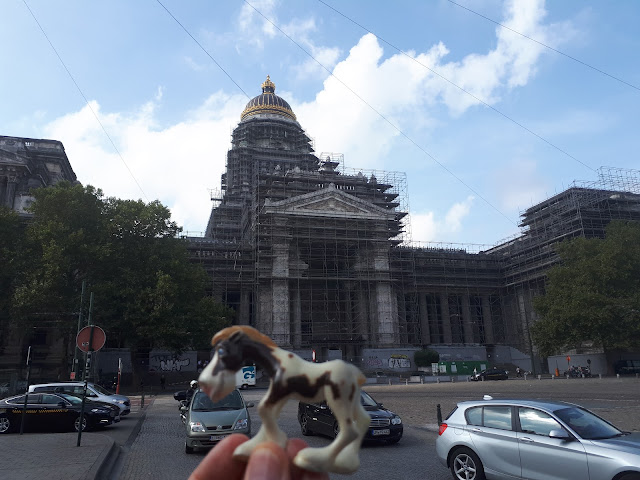Over the last two weeks, I have shown you many famous monuments and buildings of Dublin. But if there is one place that you absolutely cannot miss while being here, it is a genuine Irish pub. Open till late, of course.
And in your Irish pub, you need to order an Irish beer. This can be the Guinness, who was borne in the city. And yes, this is the same Guinness as in the Guinness Book of Records. So you know what people are capable of doing after having a few pints. So maybe we will go for a Kilkenny instead.
Unfortunately, for centuries, the men from Dublin did not go for one Guinness or Kilkenny, not even for two. As a result, their way back home was long and bumpy. Making their wives upset. But what was really upsetting the wives was that at times the husband would accidentally land in somebody else's house "because all doors look the same after a few pints". So the wise women of Dublin made sure that their husbands could not use this excuse anymore. As a result, you can find in Dublin doors of all colours. Some are blue ...
... other yellow.
A neigbouring one would then be red.
Or maybe greenish.
What really matters is that those which are the closest are brightly different.
Of course, no wife can ensure that her husband would not wander around this door instead.
Especially if he would meet a friend on his way. Jolly Irish fellows are good friends.
And in your Irish pub, you need to order an Irish beer. This can be the Guinness, who was borne in the city. And yes, this is the same Guinness as in the Guinness Book of Records. So you know what people are capable of doing after having a few pints. So maybe we will go for a Kilkenny instead.
Unfortunately, for centuries, the men from Dublin did not go for one Guinness or Kilkenny, not even for two. As a result, their way back home was long and bumpy. Making their wives upset. But what was really upsetting the wives was that at times the husband would accidentally land in somebody else's house "because all doors look the same after a few pints". So the wise women of Dublin made sure that their husbands could not use this excuse anymore. As a result, you can find in Dublin doors of all colours. Some are blue ...
... other yellow.
A neigbouring one would then be red.
Or maybe greenish.
What really matters is that those which are the closest are brightly different.
Of course, no wife can ensure that her husband would not wander around this door instead.
Especially if he would meet a friend on his way. Jolly Irish fellows are good friends.
































































